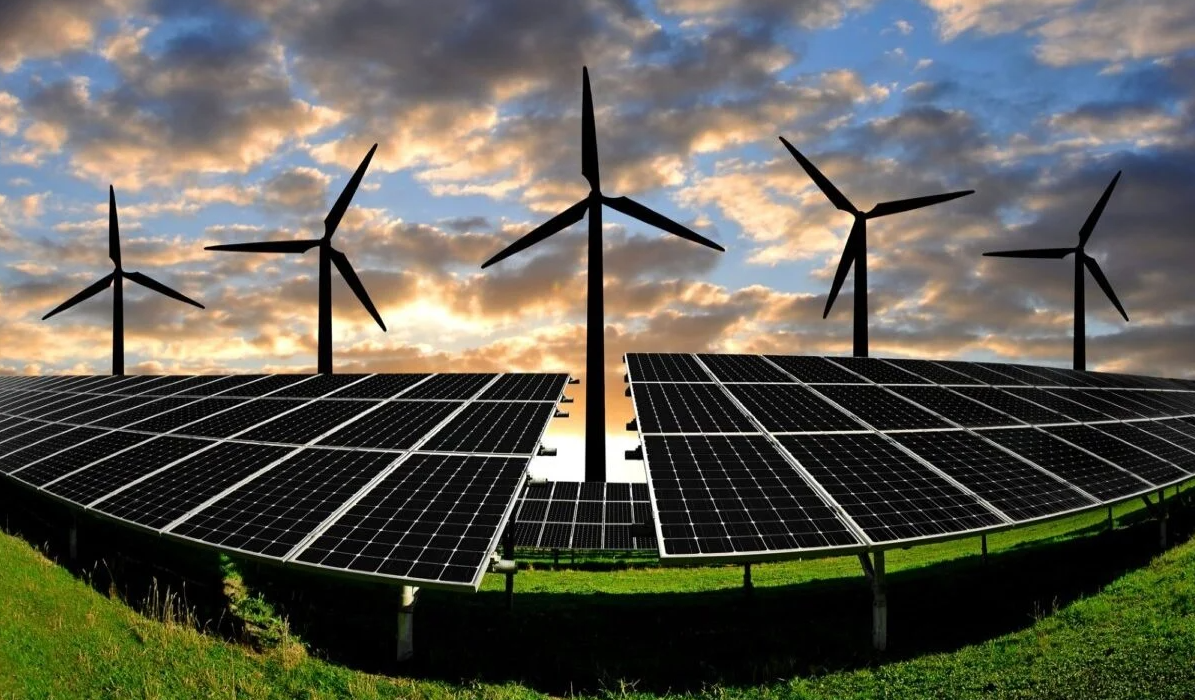In the global battle against climate change, the imperative deployment of renewable energy sources, including solar panels and wind turbines, stands as a linchpin. However, the escalating expansion of clean energy infrastructure presents a formidable challenge, frequently encroaching upon territories critical for biodiversity and human necessities. This article delves into the intricate equilibrium required between the development of renewable energy and the preservation of biodiversity. It elucidates potential solutions and underscores the paramount importance of strategic planning to navigate the intricate interplay between advancing clean energy objectives and safeguarding the diverse ecosystems essential for the well-being of both the planet and its inhabitants. As humanity grapples with these intertwined challenges, finding this delicate balance emerges as a pivotal prerequisite for a sustainable and harmonious future.
The Global Intersection of Clean Energy and Biodiversity
The recently published study in Nature Communications illuminates a concerning convergence, highlighting a pivotal overlap between regions suitable for wind, solar, and clean energy initiatives and about 10 percent of the world’s land essential for biodiversity and human needs. This intricate intersection poses a significant global challenge, particularly evident in the United States, where the demand for extensive land to accommodate solar arrays and wind turbines raises apprehensions about the potential clash between conservation priorities and the imperative for renewable energy development. Balancing these conflicting demands becomes crucial in navigating a sustainable path forward that addresses both climate change and biodiversity preservation.
Identifying the Challenges
Under the guidance of Rachel Neugarten from Cornell University, researchers underscore the imperative for meticulous planning to avert adverse effects on biodiversity while pursuing climate objectives. Their comprehensive study globally maps biodiversity, development pressures, and contributions to human life. This extensive analysis emphasizes the scarcity of protected land capable of harmonizing conservation, climate action, and development goals. The call for careful planning resonates as a vital component in achieving a sustainable equilibrium, urging decision-makers to navigate the intricate landscape where ecological preservation intersects with the urgent need for renewable energy expansion.
Finding Sustainable Solutions
To tackle the challenge at hand, the study proposes a strategic solution—constructing renewable energy projects on pre-cleared or degraded land. This approach entails repurposing abandoned industrial sites or implementing solar panels above parking lots. Rachel Neugarten, a proponent of this methodology, further endorses the integration of renewables with agriculture. Notable instances include a solar array in Minnesota, harmoniously nestled amid pollinator-friendly flowers, and a wind farm seamlessly coexisting with a cattle ranch in Arizona. These examples showcase the potential for synergy between clean energy initiatives and various land uses, providing a blueprint for sustainable solutions that minimize environmental impact and promote biodiversity.
Minimizing Ecological Footprint
While the study refrains from providing a definitive answer regarding the availability of sufficient land for all requisite renewable energy projects without compromising biodiversity, it underscores the critical significance of land use efficiency. Proposals put forth advocate for innovative strategies, such as co-locating solar and wind projects, repurposing farmland for solar panels, and employing tilt-able solar panels to optimize energy production. These approaches aim to minimize the ecological footprint associated with clean energy endeavors. By prioritizing efficiency and strategic deployment, the renewable energy sector can navigate the delicate balance between meeting the growing energy demand and preserving the integrity of ecosystems vital for biodiversity and overall environmental health.
The Role of Environmental Organizations
The Nature Conservancy, a pivotal contributor to Neugarten’s study, has released a report offering a beacon of hope for sustainable development. The report asserts that the United States can harness substantial wind and solar capacity without inflicting significant environmental harm. Proposing a comprehensive three-pronged strategy, it advocates for the coexistence of solar and wind projects, repurposing farmland for renewable energy initiatives, and incorporating innovative solar panel designs. This multi-faceted approach reflects a commitment to minimizing the environmental impact of clean energy deployment. Environmental organizations, exemplified by The Nature Conservancy, emerge as crucial stewards in steering sustainable development, ensuring that renewable energy projects align harmoniously with biodiversity conservation goals and contribute to a resilient and balanced ecological future.
Balancing Act for a Green Future
In the discourse surrounding renewable energy’s ecological impact, scientists assert that the potential environmental repercussions of constructing wind turbines and solar panels are eclipsed by the imperative to swiftly shift away from fossil fuels. Acknowledging biodiversity’s significance, they underscore the greater perils posed by climate change. Navigating the path forward requires a meticulous balancing act, wherein strategic planning, inventive solutions, and collaborative efforts among environmentalists, policymakers, and the renewable energy sector are pivotal. This synergy aims to carve a trajectory toward a green future that not only confronts climate change but also champions’ biodiversity conservation. In this complex interplay, stakeholders must harmonize the pressing need for clean energy with the imperative to safeguard Earth’s rich and diverse ecosystems.
Conclusion
The intricate intersection of renewable energy development and biodiversity conservation unveils a multifaceted challenge. However, with meticulous planning and the implementation of innovative solutions, achieving concurrent success in climate action and conservation becomes plausible. As the global community endeavors towards a sustainable future, the crux lies in striking a delicate balance between meeting escalating energy demands and safeguarding the irreplaceable ecosystems that underpin life on Earth. It necessitates a harmonious collaboration between diverse stakeholders—environmentalists, policymakers, and the renewable energy sector.
This collaborative effort must prioritize strategic planning that minimizes ecological footprints, repurposes degraded land, and integrates renewable projects with existing land uses. Through such concerted actions, humanity can navigate the complex terrain of sustainable development, ensuring that the pursuit of clean energy aligns seamlessly with the imperative to preserve biodiversity and secure the resilience of our planet for generations to come.

